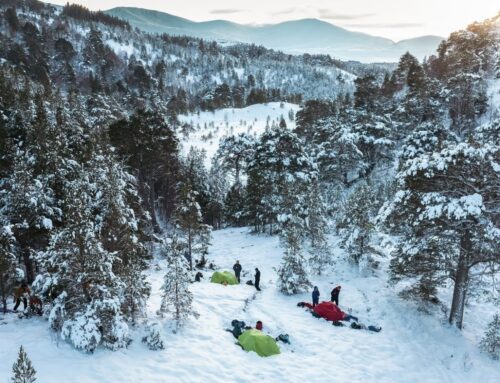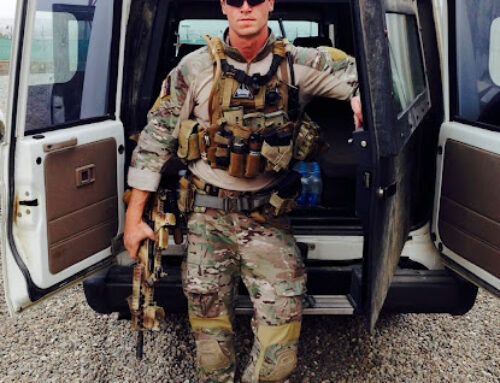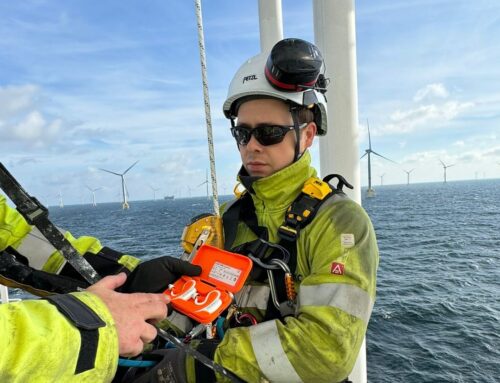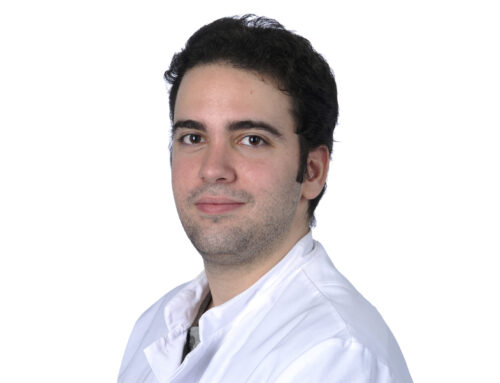Interview with Michael Helbing on the use of mobile patient monitoring technology in extreme environments
Isolation, difficult or no access to medical infrastructure, extreme environmental conditions, and limited communication make every expedition an organizational and medical challenge. Michael Helbing, emergency paramedic and Pg.Dip. Wilderness & Expedition Medicine, has experience in caring for patients in remote regions. We spoke with him about his work in expedition medicine, the challenges it presents, and the potential offered by cosinuss°'s mobile patient monitoring.

About the interview partner:
Michael Helbing, 44, is a professional firefighter and paramedic with nearly 20 years of professional experience in ground and air rescue services. He has been with the Hamburg Fire Department since 2011 and is also involved as a trainer and practical instructor for emergency paramedics and in specialized units, including the Maritime Incident Response Group (MIRG) of the Central Command for Maritime Emergencies in Cuxhaven. His qualifications include international certifications as a Flight Paramedic (FP-C), Critical Care Paramedic (CCP-C), and HEMS Technical Crew Member (HEMS-TC). He has also completed numerous emergency medical training courses in recognized course formats. A postgraduate diploma in Wilderness & Expedition Medicine as well as international training and internships – including at World Extreme Medicine and the EURAC Institute for Alpine Emergency Medicine – have expanded his expertise specifically for medical missions under difficult conditions.
How does one become an “expert in expedition medicine”? Was there a key moment for you?
The path to expedition medicine usually leads through classic emergency medicine—combined with a personal passion for nature, adventure, and working under extreme conditions, I would say.For me, there was actually a very specific key moment: my first stay in Africa, more precisely in Senegal. The medical challenges there, characterized by limited or completely lacking infrastructure, made me realize how important it is to have in-depth knowledge in this area.I later had similar experiences in other regions – most recently at the beginning of this year in the Brazilian hinterland. In such remote areas, you are completely on your own in an emergency. A simple first aid kit or classic emergency medical knowledge is simply not enough there. These experiences motivated me to intensively and systematically study medicine in extreme environments, which led me to decide to pursue my PG Dip. in Wilderness and Expedition Medicine at the University of South Wales.
What does your everyday life in expedition medicine look like?
There is hardly any fixed daily routine in the traditional sense in expedition medicine. The focus of my work is currently on training courses with an emphasis on emergency and expedition medicine in Germany and abroad, as well as consulting—especially in preparation for trips and projects in remote regions. In addition, I am regularly involved in testing and evaluating medical products to check their practical suitability under realistic conditions. In addition to these areas of focus, I continuously keep my medical knowledge up to date and also make sure that I am in good physical shape for possible assignments.
What qualifications and characteristics are required in expedition medicine?
A medical background—for example, as a paramedic or doctor, especially with experience in anesthesia or intensive care medicine—provides a solid foundation. In addition, typical additional qualifications in emergency medicine, such as courses in trauma or advanced life support (ACLS) are useful and helpful.
Anyone who wants to study expedition medicine academically will quickly discover that there are currently no relevant courses available in Germany. That's why I decided to complete my PG Dip in Wilderness & Expedition Medicine at a British university. In addition to professional qualifications, personal characteristics also play a central role: resilience (physical and mental), the ability to improvise, teamwork skills, and a calm head in critical situations are essential. Those who work in such environments must be able to cope with isolation, limited resources, and personal and external responsibility—often over a long period of time and without direct external support.
What medical emergencies do you most frequently encounter on expeditions?
Medical emergencies vary depending on the environment, but certain types occur repeatedly. The most common include injuries such as sprains, fractures, or wounds of various kinds—usually as a result of falls or accidents in the field. Gastrointestinal complaints and conditions such as dehydration, hypothermia, or heat exhaustion also occur regularly, exacerbated by the respective environmental conditions. Serious, potentially life-threatening emergencies are relatively rare, even on expeditions, but they require special attention. Treating such cases is much more complex than in traditional emergency services, particularly due to aggravating circumstances such as extreme weather conditions, inaccessible or challenging terrain, and limited medical resources.
What are the biggest challenges under extreme conditions?
Isolation, lack of or limited medical infrastructure, extreme environmental conditions, and limited communication make every expedition a complex organizational and medical task.
The decisive factor is not so much the ability to cope with small individual emergencies as the long-term operational capability of the team—physically, mentally, and medically.
This requires reliable equipment and the ability to make early and realistic decisions about evacuation, thereby ensuring the safety of everyone involved.
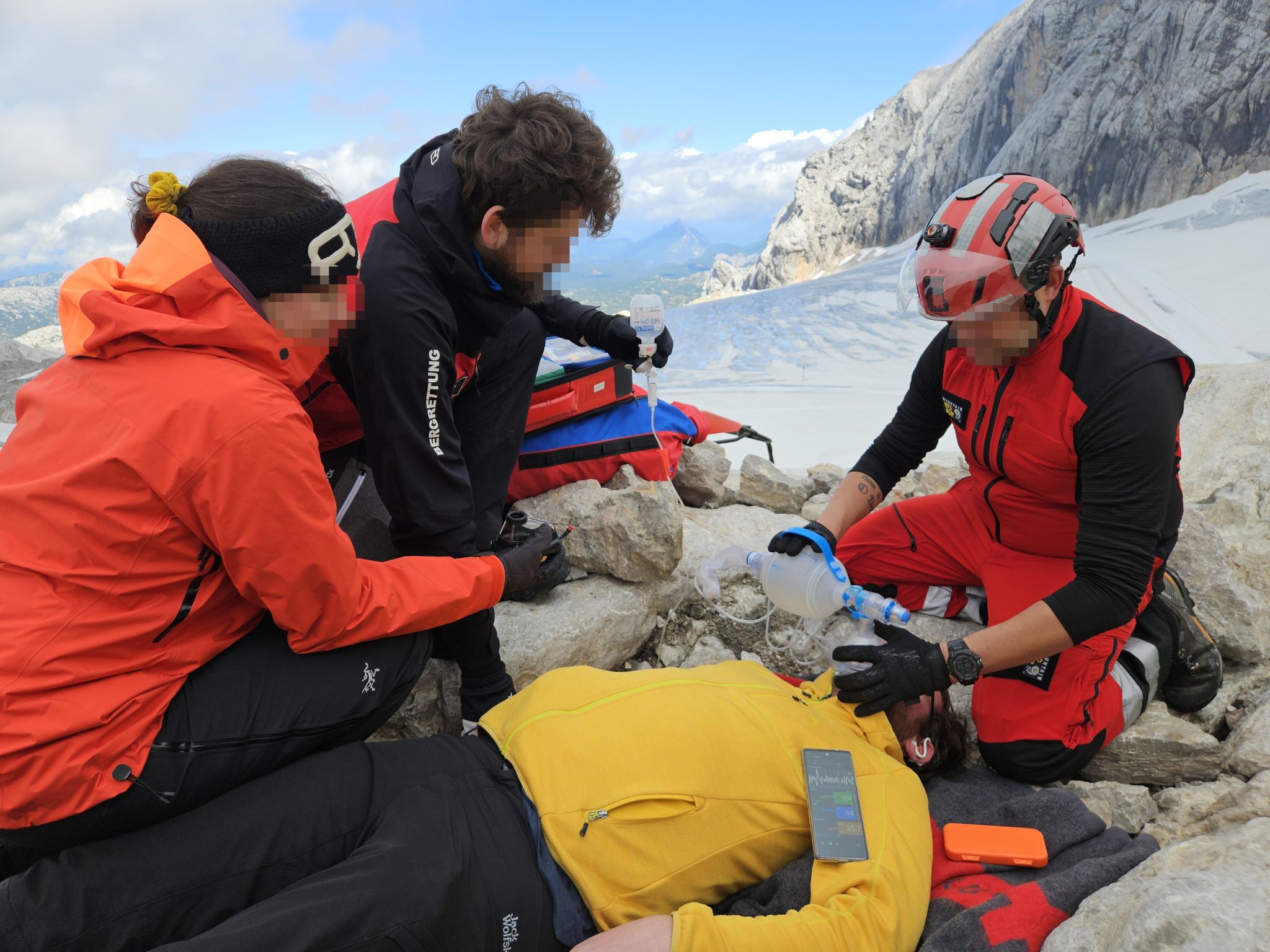
Use of cosinuss° patient monitoring during the alpine emergency medicine training session as part of the “BergNotfall 2025” course (photo credit: Michael Helbing)
How did you find out about cosinuss° technology?
I found out about cosinuss° through several events and also through reports on LinkedIn. The concept of recording vital signs in real time directly in the ear was extremely interesting to me. Especially in the context of expeditions, where mobility and, above all, low weight and pack size are crucial, it immediately convinced me.
Where and how have you already used cosinuss° technology?
I first used cosinuss° patient monitoring at the BergNotfall 2025 symposium and directly under realistic conditions in a high alpine environment. The focus was on recording key vital signs such as oxygen saturation, pulse rate, and body temperature—especially in the context of emergency care in the mountains.
How does cosinuss° help in practice under restricted conditions?
The cosinuss° system enables continuous and precise monitoring of key vital parameters—even under challenging conditions. This allows medically relevant changes, such as the onset of hypothermia or changes in circulatory regulation, to be detected at an early stage and responded to in a targeted manner. A major practical advantage is the compact design of the c-med° alpha and its ease of use: it is worn directly in the ear, can be put on quickly, and its correct fit can be easily checked at any time.
Which vital signs are particularly important – and how does c-med° alpha help?
The most important ones are: core body temperature, pulse rate, oxygen saturation, and respiratory rate. These parameters provide early indications of circulatory dynamics and potentially life-threatening conditions.
The c-med° alpha, together with the °Health app, makes it possible to record the first three vital parameters mentioned in real time and, if necessary, even forward them via satellite communication to medical teams/specialists outside the scene of the emergency.
How does vital sign monitoring change risk management during expeditions?
Continuous recording of vital signs enables a better understanding of the health status of individual team members, either preventively or as a “monitoring device” directly on the patient. Emerging health problems can be detected early and responded to accordingly. Continuous monitoring can also be supportive in the context of emergency medical treatment. The data obtained is incorporated into the ongoing assessment of the situation and can contribute to the targeted treatment of a problem or provide the team leader on site with important information about the current status of his team.
Let's take a look into the future: What potential does cosinuss° have in expedition medicine?
I see great potential in cosinuss° technology for the further development of expedition medicine. The combination of portable sensors, real-time data, and digital networking can significantly improve medical care in remote regions—comparable to the advances that telemedicine has already made possible in other areas.
In my opinion, further field tests accompanied by data, images, and video material are necessary to exploit the full potential. These should also demonstrate the reliability of the technology under extreme environmental conditions, thereby attracting the attention of potential users and customers.
Furthermore, greater integration into existing rescue and communication structures – ideally with the option of real-time location transmission – could sustainably improve medical care for expeditions and remote working teams (RWT).
Photo credits: Michael Helbing



